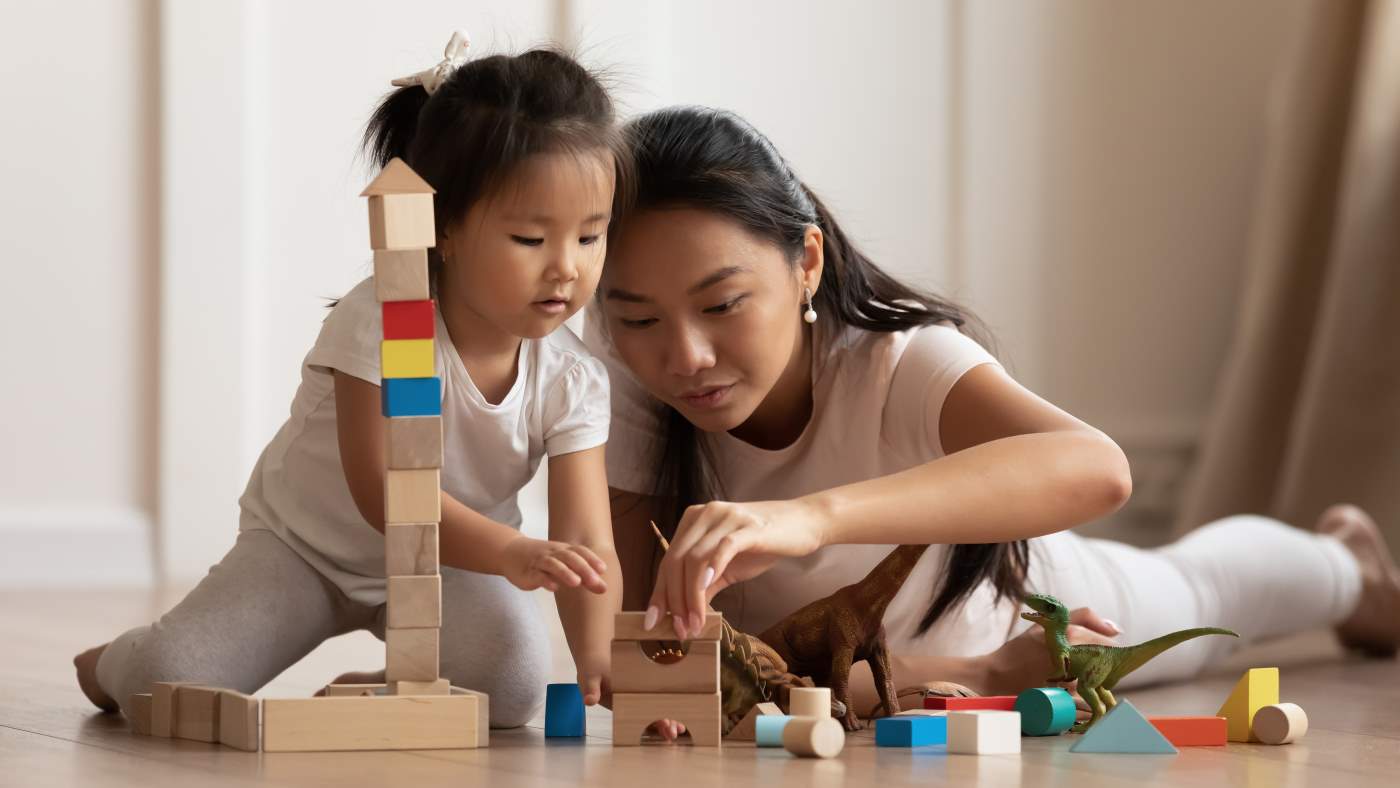Sometimes comparison is important... and that’s when you’re talking maths!

One of the ways you might notice your child comparing items, and so learning about the world around them, is by seeing them adjust their plans based on the weight or size of items. You might notice it when they choose to pick up the lighter box of blocks, or place a light item on top of the bridge they build instead of a heavy one. You can help them to distinguish the differences between items by talking about them in more than one way.
It’s quite natural to point out measurements your child is noticing, like when one tower is taller than the other, but did you know that a simple way for you to help them process this information is to also say the opposite statement? So in this case you might say that the yellow tower is taller, and the blue tower is shorter.
At first it can seem silly to be repeating yourself – but remember that for your child these things are not yet obvious.
Saying both examples helps your child to really notice what is different about the two (or more) items, and reinforces the thing they would need to focus on when thinking about the objects in order to see what is unique about them.
This is especially useful for times your child might come across items which look very similar, or even the same, apart from one important difference. It might be that two identical boxes have different contents which makes them different weights, or that two toys might look the same other than being different sizes.
It can also help your child understand how measurements relate to each other.
Realising, for example, that Granny being older than Mummy also means that Mummy is younger than Granny, will give important context to understanding how age works as they meet more people and learn about measuring time.
This is also true of understanding the way mass and weight impact objects; hearing and remembering that if the blocks are heavier than the teddy, this also means that the teddy is lighter than the blocks, reinforces the focus on that one difference over all the others which might be important in specific situations (such as deciding which toy to add to a backpack for a day out) and again over time will help your child build their understanding of how weight can be used to compare two things.
So, although it might feel strange at first, try to remember when you mention a comparison about weight, size, time or speed to always repeat the equivalent statement when flipped.
Reference:
Cockburn, A.D and Haylock, D. (2017) Understanding Mathematics for Young Children, 5th Ed. SAGE:London p.200-202